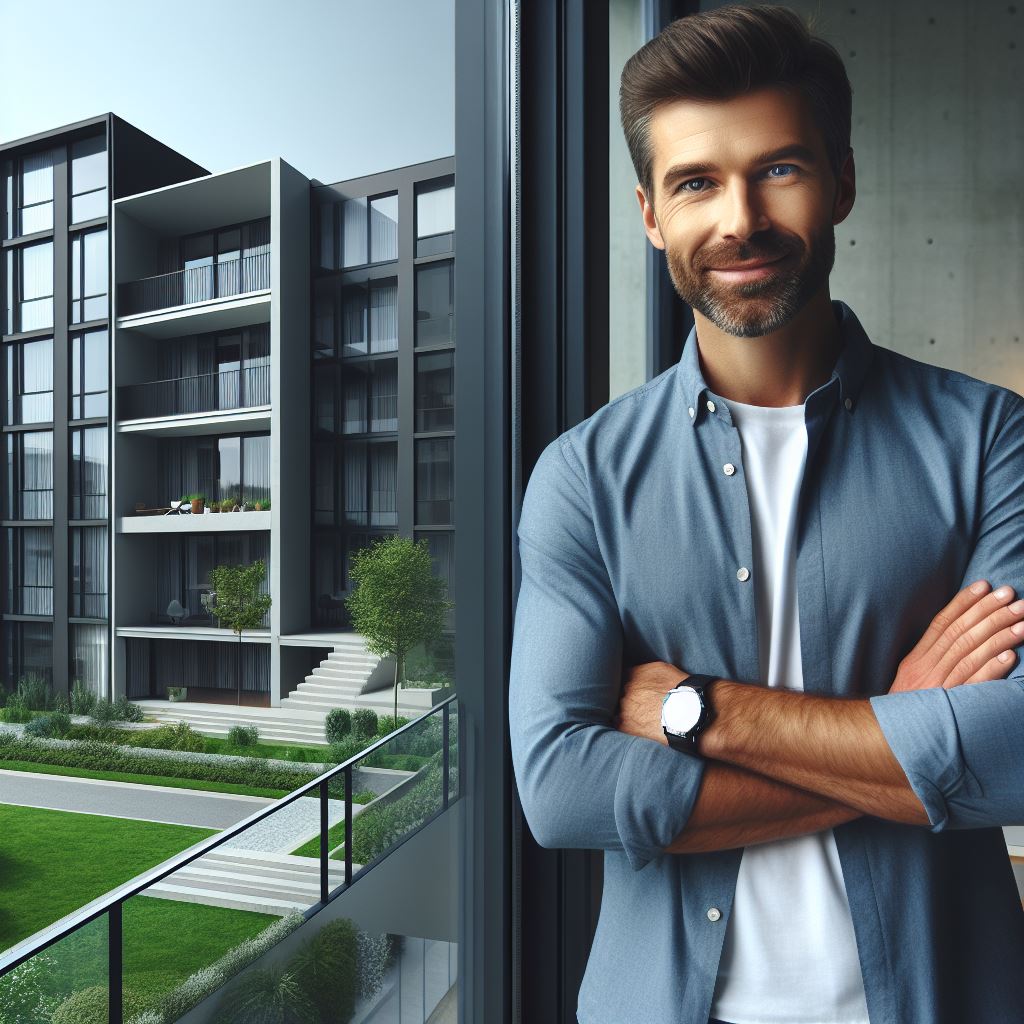Introduction
Urban vs Suburban Development Shifts: Urban and suburban development are both crucial factors in shaping the physical landscape and societal dynamics of a region.
Urban development refers to the growth and expansion of cities, characterized by the construction of buildings, infrastructure, and the influx of human population.
Suburban development, on the other hand, pertains to the growth of residential areas adjacent to cities, often characterized by low-density housing and a more residential focus.
Understanding the shifts between urban and suburban development is vital for several reasons.
Firstly, it allows policymakers and urban planners to make informed decisions about land use, transportation, and resource allocation.
By understanding where people live and work, cities can plan their infrastructure, accordingly, reducing congestion and improving accessibility.
Secondly, comprehending these shifts can provide insights into social and economic trends.
For example, the movement of people from urban to suburban areas may indicate changing lifestyles and housing preferences.
Similarly, an increase in urban development may signify economic growth and opportunities.
Additionally, understanding urban and suburban development shifts can help identify potential challenges and opportunities for sustainability.
By examining patterns of land use and resource consumption, policymakers can develop strategies for creating more efficient and environmentally friendly urban and suburban spaces.
In fact, urban and suburban development are critical components of a region’s growth and development.
Recognizing and analyzing the shifts between the two allows for effective planning and development strategies, and enables a better understanding of societal, economic, and environmental trends.
Factors Influencing Urban Development Shift
Population Growth and Density
The rapid increase in urban population is a driving force behind the shifting landscape of urban development.
As more people flock to urban areas seeking economic opportunities and a vibrant lifestyle, cities must grapple with the challenges of accommodating a swelling populace.
The rise in population exerts immense pressure on existing infrastructure and services, ranging from transportation systems to healthcare facilities.
Urban planners face the daunting task of ensuring these vital elements keep pace with the influx, all while maintaining a high quality of life for residents.
Economic Considerations
Job Opportunities in Urban Areas
Urban centers have long been magnets for job seekers, offering a diverse array of employment opportunities across various industries.
The concentration of businesses, financial institutions, and tech hubs in urban areas acts as a beacon for those seeking career advancement.
The allure of a thriving job market often entices individuals to migrate from suburban to urban settings in pursuit of professional growth.
Cost of Living in Urban Areas
However, the economic landscape is a double-edged sword. While urban areas offer promising career prospects, the cost of living can be notably higher.
Housing, transportation, and everyday essentials often come at a premium in cities, leading some to reconsider their urban lifestyle.
The interplay between job opportunities and living expenses plays a pivotal role in shaping migration patterns.
Changing Lifestyle Preferences
Desire for Walkability and Accessibility
A shift in lifestyle preferences has emerged as a significant factor in the urban development landscape.
Modern urban dwellers increasingly value walkability and accessibility.
The desire to live in neighborhoods where amenities are within easy reach has spurred a renewed interest in urban living.
Proximity to workplaces, entertainment, and essential services has become a priority for those seeking convenience in their daily lives.
Cultural Attractions in Urban Areas
Beyond practical considerations, the cultural richness and diversity found in urban areas are powerful magnets for residents.
Museums, theaters, galleries, and a vibrant social scene contribute to the allure of city living.
As people seek a blend of convenience and cultural experiences, urban areas are evolving to meet these changing preferences, reshaping the dynamics of urban and suburban development.
Read: Garage Conversion Permits: Key Steps
Benefits and Drawbacks of Urban Development
Benefits
Urban development brings with it a range of benefits and drawbacks.
On the positive side, urban areas provide access to a wide range of amenities and services.
Need a café, a restaurant, or a shopping mall? Urban areas have it all, often within walking distance.
Transportation convenience is another advantage of urban development.
Public transportation systems are typically more developed in urban areas, enabling residents to easily commute to work, school, or any other destination.
This reduces the need for private cars and helps alleviate traffic congestion.
Perhaps one of the most significant benefits of urban development is the potential for greater economic opportunities.
Urban areas tend to be economic hubs, attracting businesses of all sizes.
This creates a diverse job market, with opportunities for various professions and career paths.
Moreover, the close proximity of businesses and institutions facilitates networking and collaboration, fostering innovation and economic growth.
However, urban development also comes with its share of drawbacks.
One major downside is the higher cost of living.
The demand for housing and the scarcity of space in urban areas often drive property prices up, making it difficult for low-income individuals and families to afford housing.
In addition, the cost of essential goods and services, such as groceries and healthcare, may be higher in urban areas.
Drawbacks
Noise and pollution levels are another drawback of urban development.
With a high population density and numerous vehicles, cities tend to be noisier and more polluted compared to suburban or rural areas.
The constant hustle and bustle can negatively impact the quality of life and contribute to health issues for urban residents.
Furthermore, urban areas often face limited space for further development and green areas.
As urban populations continue to grow, finding available space for new buildings and infrastructure becomes increasingly challenging.
This can lead to overcrowding and a lack of green spaces, such as parks or gardens, which are essential for the well-being of urban dwellers.
In short, urban development brings both benefits and drawbacks.
While urban areas offer access to amenities, convenient transportation, and economic opportunities, they also come with a higher cost of living, noise and pollution levels, and limited space for development and green areas.
Understanding these factors is crucial when considering the future of urban development and its impact on society.
Read: Rising Costs: Navigating Real Estate

Factors Influencing Urban Development Shift
As urban areas face growing challenges, an increasing number of individuals and families are choosing to shift their focus towards suburban development.
This transition is influenced by various factors that redefine the appeal of suburban living.
Housing Affordability
- Lower Housing Costs in Suburban Area: One of the primary factors contributing to the suburban shift is the affordability of housing. Suburban areas often offer more space at a lower cost compared to their urban counterparts. This affordability becomes a magnet for families seeking financial stability and a comfortable living environment.
- Influence on Mid to High-Income Familie: The allure of suburban living extends beyond just lower housing costs. For mid to high-income families, the prospect of acquiring a larger property for the same investment is a powerful motivator. This financial advantage, coupled with the promise of a higher quality of life, creates a compelling case for suburban migration.
Quality of Lifestyle
- Larger Homes and Yards: Suburban homes are synonymous with space. The prospect of owning a spacious house with a sizable yard is a dream for many. This shift in preference signifies a departure from the cramped living conditions often associated with urban life.
- Lower Crime Rates: Suburban areas typically boast lower crime rates, creating a sense of safety and security. Families are drawn to these neighborhoods, where they can raise their children without the constant worry about safety.
- Family-Friendly Environments: Suburbs are known for their family-friendly atmosphere. The presence of good schools, recreational facilities, and community events fosters an environment conducive to raising children. This appeal makes suburbs an attractive option for those prioritizing family values.
Commuting Distances and Transportation Options
- Desire for Shorter Commutes: As urban congestion worsens, the desire for shorter commutes becomes a critical factor. Suburban areas, often located on the outskirts of cities, offer an escape from the daily grind of lengthy and stressful commutes.
- Availability of Public Transportation in Suburbs: Contrary to the perception that suburbs lack transportation options, many suburban areas now boast efficient public transportation systems. This development addresses the need for connectivity while maintaining the suburban charm.
Basically, the shift towards suburban development is fueled by a combination of housing affordability, a superior quality of lifestyle, and improved commuting options.
As these factors continue to influence decisions, the landscape of our cities will undoubtedly undergo transformative changes.
Read: Permits for Pools: Rules You Should Know
Benefits and Drawbacks of Suburban Development
Benefits
Suburban development offers numerous benefits that attract individuals and families seeking a tranquil and spacious living environment. Let’s explore these advantages:
- Lower cost of living: One of the primary benefits of suburban development is the lower cost of living compared to living in urban areas. Housing prices, grocery expenses, and utilities are often more affordable in suburban communities. This affordability allows residents to enjoy a higher quality of life without breaking the bank.
- More space for housing and green areas: Unlike urban areas, suburban regions offer ample space for housing, with larger lots and single-family homes. Additionally, these communities have more green areas, including parks, golf courses, and open spaces, providing residents with opportunities for outdoor activities and relaxation.
- Quieter and less congested living environment: Suburban neighborhoods are known for their peaceful and serene atmosphere compared to the hustle and bustle of urban areas. With fewer crowds and less traffic congestion, residents can enjoy a quieter setting, perfect for those who seek tranquility and a break from the chaos of city life.
Drawbacks
While suburban development offers various advantages, it also presents certain drawbacks that individuals must consider:
- Limited access to amenities and services: Suburban areas are often located further away from urban centers, leading to limited access to amenities such as shopping malls, restaurants, and entertainment options. This may require residents to travel longer distances to fulfill their daily needs and desires.
- Dependence on private transportation: Suburbs generally have limited public transportation infrastructure, resulting in a higher dependence on private vehicles. This can lead to increased commuting times, traffic congestion during rush hours, and higher expenses associated with car ownership and maintenance.
- Potential isolation from cultural and business opportunities: Suburban living can sometimes create a sense of isolation from the vibrant cultural scenes and business opportunities found in urban areas. This may affect individuals who thrive on engaging with diverse communities and seeking professional growth and networking opportunities.
In essence, suburban development has its fair share of benefits and drawbacks.
While it offers a more affordable cost of living, spacious housing options, and a peaceful environment, it also presents challenges such as limited access to amenities, dependence on private transportation, and potential isolation from cultural and business opportunities.
Each individual should carefully consider these factors before deciding on the type of environment that best suits their lifestyle and priorities.
Read: Smart Tech in Modern Home Builds
Analysis of Current Urban vs. Suburban Development Trends
A shift can be observed in the development patterns of urban and suburban areas.
This section will delve into the statistics, housing demand, infrastructure, and local economies to understand the dynamics better.
Statistics on Urban and Suburban Population Growth
- Urban areas have experienced a significant increase in population over the past few decades.
- Suburban areas, on the other hand, have witnessed exponential growth, surpassing urban population growth.
- Factors contributing to suburban population growth include lower housing costs and an increased preference for a suburban lifestyle.
- As a result of these trends, suburban areas have become more populated than their urban counterparts in many regions.
Shifts in Housing Demand and Prices
- The shift towards suburban living has influenced the housing market.
- Demand for housing in suburban areas has risen steadily, leading to an increase in prices.
- In contrast, urban housing demand has stagnated or even declined due to factors like rising costs and limited space.
- Higher housing prices in suburbs have attracted urban dwellers looking for affordable options and better amenities.
Comparison of Infrastructure and Public Service Investments
- Urban areas generally have well-developed infrastructure and robust public services.
- Suburban areas have seen an increase in investments to accommodate the growing population.
- While urban areas have established systems, suburban areas are working on expanding their infrastructure.
- Governments and local authorities are focusing on improving public services in both urban and suburban regions.
Impact on Local Economies and Employment Rates
- Urban areas have traditionally been centers of economic activity, attracting businesses and providing employment opportunities.
- However, as suburban areas grow, they have begun to witness an increase in economic activity and job opportunities.
- Due to lower costs and space availability, many companies have started shifting their operations to suburban areas.
- This shift has positively impacted the local economies and employment rates in suburbs, while urban areas face challenges.
All in all, the analysis of current urban vs. suburban development trends reveals a significant shift in population, housing demand, infrastructure, and local economies.
Suburban areas are witnessing exponential growth, with increased population and housing prices.
Infrastructure and public service investments are catching up with the growth in both regions.
Additionally, suburban areas are experiencing a boost in their local economies and employment rates, challenging the traditional dominance of urban centers.
Conclusion
In this exploration of urban vs. suburban development shifts, we delved into the contrasting features that define these living environments.
Urban areas are marked by their vibrancy, cultural richness, and proximity to amenities, while suburbs boast tranquility, spaciousness, and a closer connection to nature.
Both settings offer unique advantages and drawbacks, making the decision between them a matter of personal preferences and lifestyle priorities.
We highlighted the dynamic nature of urban development, characterized by vertical expansion, mixed-use spaces, and a focus on sustainability.
On the flip side, suburban development revolves around horizontal growth, single-family homes, and a reliance on personal vehicles.
Understanding these distinctions is crucial for anyone contemplating a move or investment in real estate.
The ongoing urban vs. suburban development shifts are more than just spatial rearrangements; they represent a societal evolution.
The past decade has witnessed a resurgence of interest in urban living, driven by a desire for convenience, access to cultural experiences, and sustainable transportation options.
However, recent global events have sparked a renewed appreciation for the suburban lifestyle, with its emphasis on space, privacy, and a closer connection to nature.
Cities are responding to these shifts by reimagining urban spaces, creating more green areas, promoting sustainable practices, and fostering community engagement.
Similarly, suburbs are evolving to offer the conveniences traditionally associated with city living, such as mixed-use developments and improved public transportation.
Ultimately, the decision between urban and suburban living hinges on individual needs and preferences.
It’s essential to consider factors such as lifestyle, work requirements, family considerations, and personal values.
Urban enthusiasts may find fulfillment in the hustle and bustle of city life, while those seeking tranquility and space may gravitate towards the suburban landscape.
In the end, the urban vs. suburban dichotomy is not a one-size-fits-all scenario.
Recognizing the ongoing shifts in development trends allows individuals to make informed decisions based on their unique circumstances.
By prioritizing personal preferences and needs, individuals can find the perfect balance between the energy of urban living and the tranquility of the suburbs.




